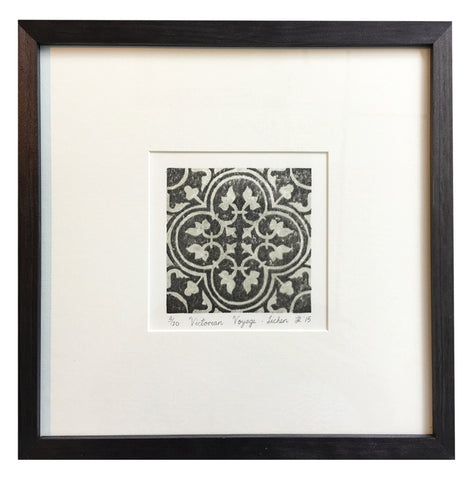Textile Enthusiasts from Friends of the Museums group gathered in our space for a talk on Japanese woodblock printing by my good friend Jennifer Lim. Antique fabric collectors, textile consultants, artists and enthusiasts were completely immersed in her demonstration. Jennifer's work is influenced by her Peranakan culture, her education and training in Japan, and like me her love for travel. One of her works, Mind Map II, is inspired by the view of islands from a plane window.
"I am interested in maps and language used by people to describe and define their ethnic identity, personal history and geographical surroundings."
Everywhere in the world, the craft is rooted in daily human life such as agriculture. That is why craft differs so much among climates. Jennifer relates that in olden days in Japan, washi paper used in printmaking was made by farmers. During the cold winters when there was no fieldwork, making paper out of plant fibers gives them income. Ukiyo-e prints reflected the trends of the time. Prints showing Geisha and their elaborate hairstyles often used specialist woodblock carvers dedicated to hair fashions.
About the Craft
With origins in China, Japanese woodblock is a 400-year-old printing technique refined by Japanese craftsmen during the 1700s. Commonly known as Ukiyo-e, these artworks were an affordable alternative to traditionally inaccessible aristocratic paintings. Dynamic and highly popular, Ukiyoe reflected fashion, theatre and pursuits popular with the newly wealthy merchant class. Adopted by modern artists in the early 20th century in Japan, the surprisingly 'eco-friendly' process is now used by international artists who adore its versatility and often complex nature. The ability to create intricate detail, vivid colours and delicate painterly effects makes it a highly desirable and unique printmaking medium.
Tile Trade: Wealth & Luck
STEPS TO CREATING A PRINT
1. Cut the woodblock to size using a handheld jigsaw and avoid any injuries!
2. Transfer images to the woodblock
3. Carve with special tools
4. Cut each piece of professional grade washi paper to size
5. Use water-based ink and nori rice glue with hog hair brushes
6. Work up a sweat printing with a hand-held disk baren
7. Flatten prints using favourite hard-cover books
All of Jennifer's prints are created in her home studio in Toa Payoh, which is one of Singapore's oldest housing estates.
She imports most of her tools and paper directly from Japan - much to the interest of her local postman!
Mind Map II
Victorian Voyage: Lichen







